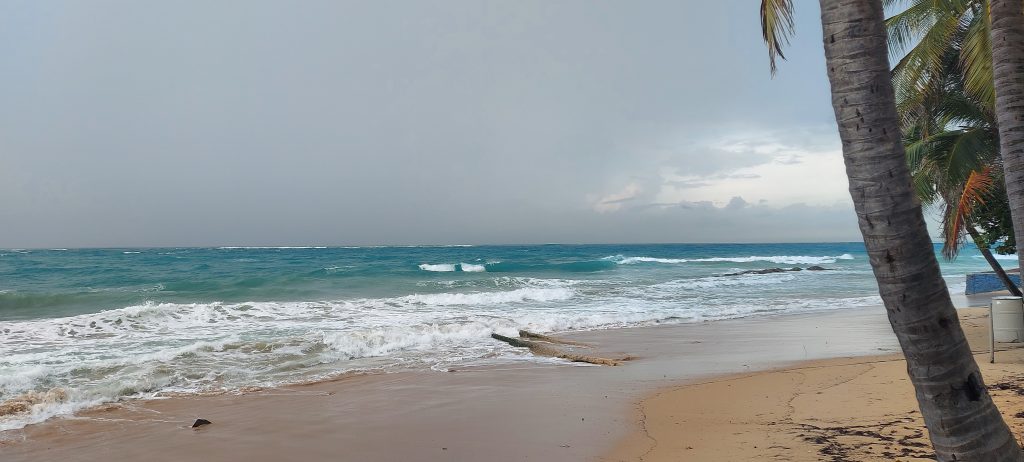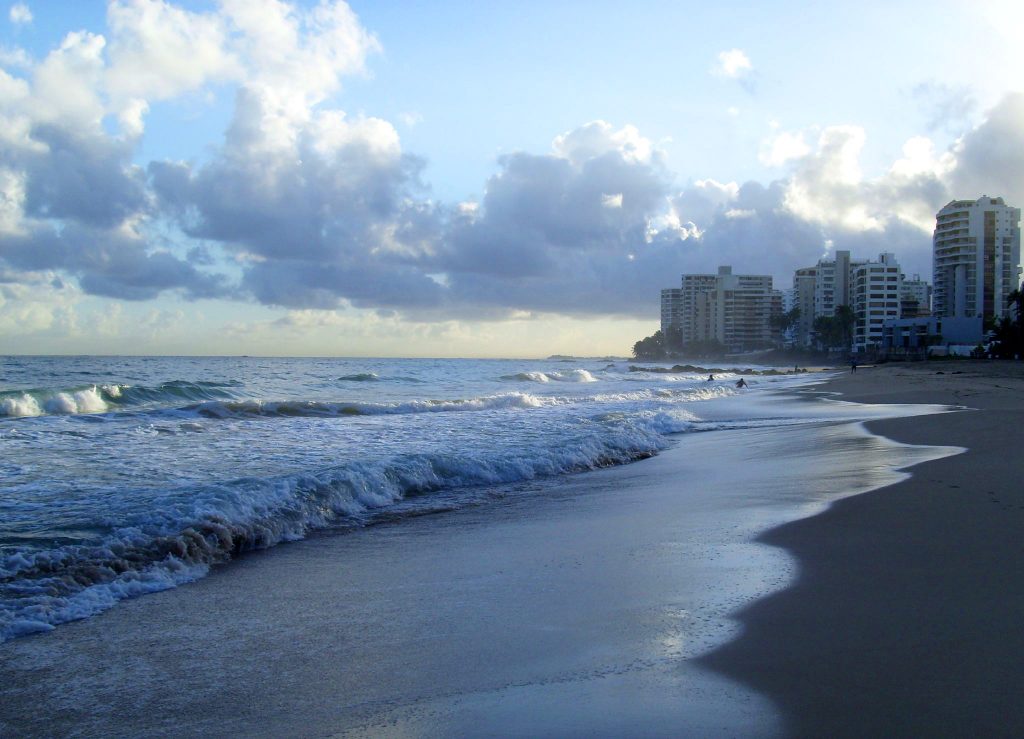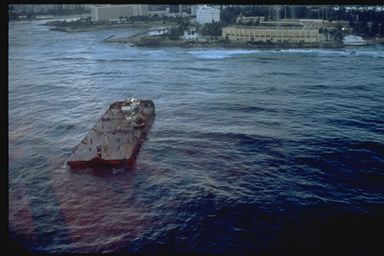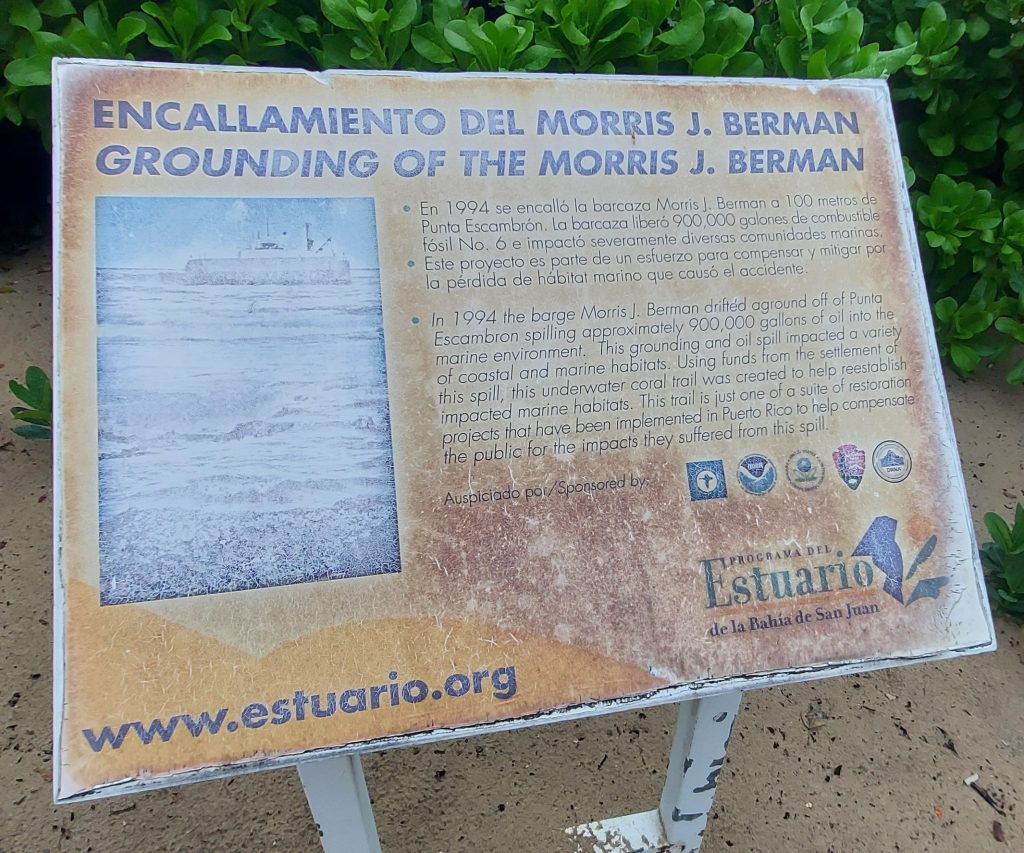The first time I set foot on the island of Puerto Rico was Jan. 6, 1994, when I moved there from Manhattan to become Caribbean Correspondent for The Associated Press. The AP flew me down and put me up in a beautiful hotel right on the ocean. When I arrived, I surveyed the pristine golden beach and the clear turquoise sea from my hotel room window, feeling so lucky to have landed in such a wonderful place. Before I went to bed my first night, I stood on my balcony looking out at the moon and stars and listening to the distinctive chirping of the coquis, Puerto Rican tree frogs, and the roar of the ocean crashing onto the beach.

Paradise, I thought.
I woke up with a splitting headache and an acrid stench filling my nostrils. I stumbled to the window, opened the shades, and all I could see out to the horizon was black tar. No turquoise sea. No golden sand. Black water and a filthy beach. What the hell had happened while I was sleeping?

I called the AP San Juan Bureau from my hotel and dictated a quick story, and then–since I didn’t even have a rental car yet–grabbed a notebook and pen, threw on running clothes and shoes, and set out on foot down the road closest to the ocean, Avenida Ashford, trying to make sense of it. Miraculously, when I got to the end of the Condado area, right before the Dos Hermanos Bridge that crosses Condado Lagoon, a helicopter landed right in front of me and Puerto Rico Gov. Pedro J. Rosselló stepped out, there to survey the damage.
I was able to interview him, and broke a huge story before my first day on the job. It turns out that during the night, the Morris J. Berman, a barge carrying 1.5 million gallons of oil, had drifted toward shore and collided with a coral reef, which ripped a hole in its hull and allowed 750,000 gallons of heavy black oil to spill into the Atlantic Ocean.
I learned later, after crossing telephone wires and finding myself talking to the officer in charge of the investigation, that the man who was at the helm of the barge that night drank too much and fell asleep at the wheel, which was why the barge was just drifting and was able to hit the reef.

The spill sullied 100 miles of shoreline and had a huge impact on the health of shore and sea birds, ocean life, vegetation, and of course tourism. You can read all about it here. (Unfortunately, I can’t find my original story online, as this was pre-Internet.)
Two days ago and 27 years later, I was walking through Condado, again on my first day in San Juan, and found some signs put up by the San Juan Estuary Program that mentioned the grounding of the Berman and subsequent environmental impact.

This poster is very weathered but perhaps you can read it. It talks about the environmental impact, clean-up efforts, and promotes the maintenance of this region.
This poster certainly brought back dramatic memories of that incident, which affected my life in many ways. It gave me the opportunity to come flying out of the gates as a foreign correspondent, breaking a huge story the morning after I arrived on the island. It shaped my reporting for the next year as the government focused on the investigation of the spill and clean-up challenges.
Twenty-seven years later, I’m back in San Juan, this time to live for two months. The beach is pristine and the ocean is glorious. There’s no evidence of the environmental damage the Morris Berman wrought.
Still, I am reminded to never take for granted nature’s beauty, and that we all have a responsibility to keep our world clean.

